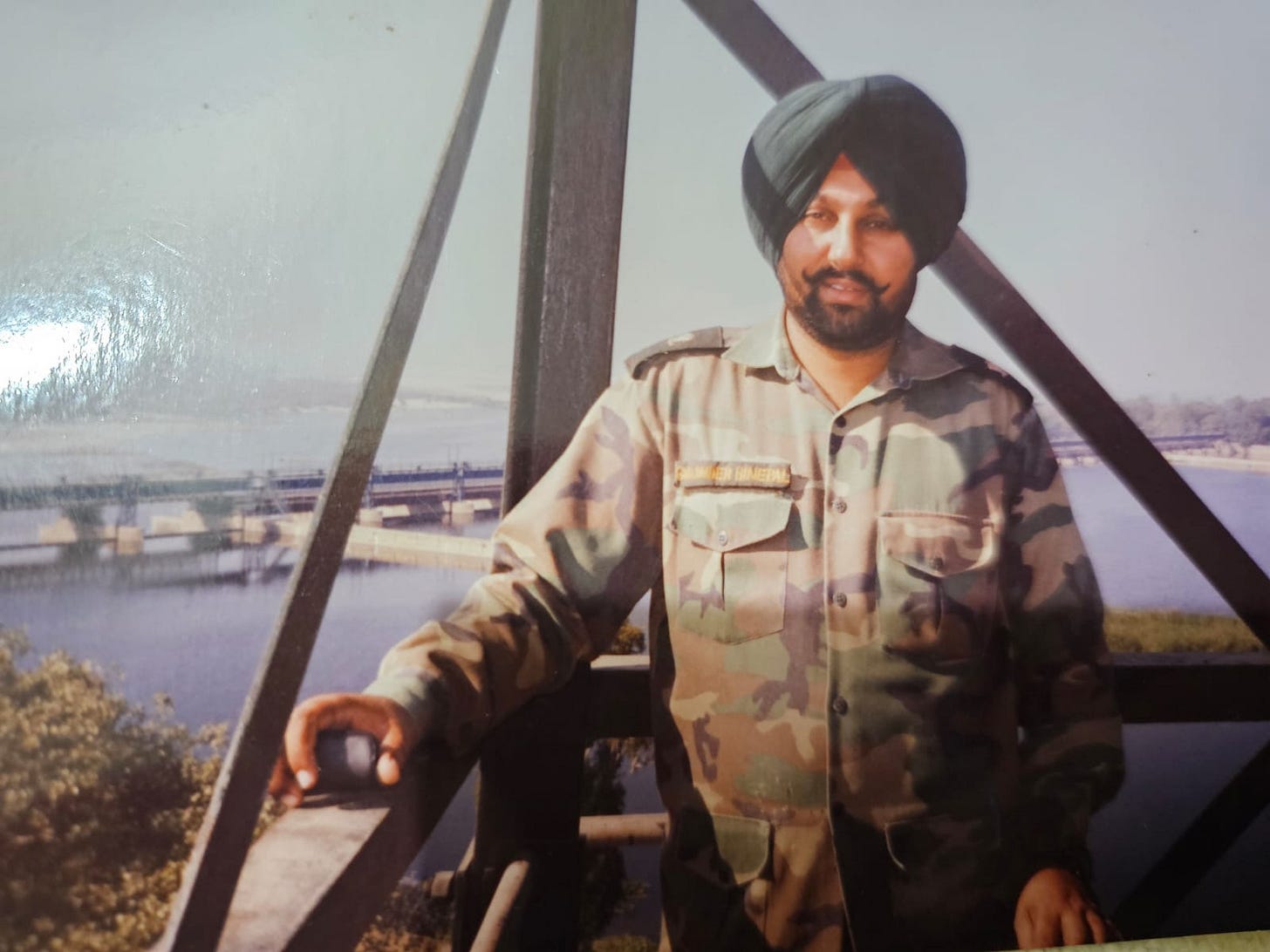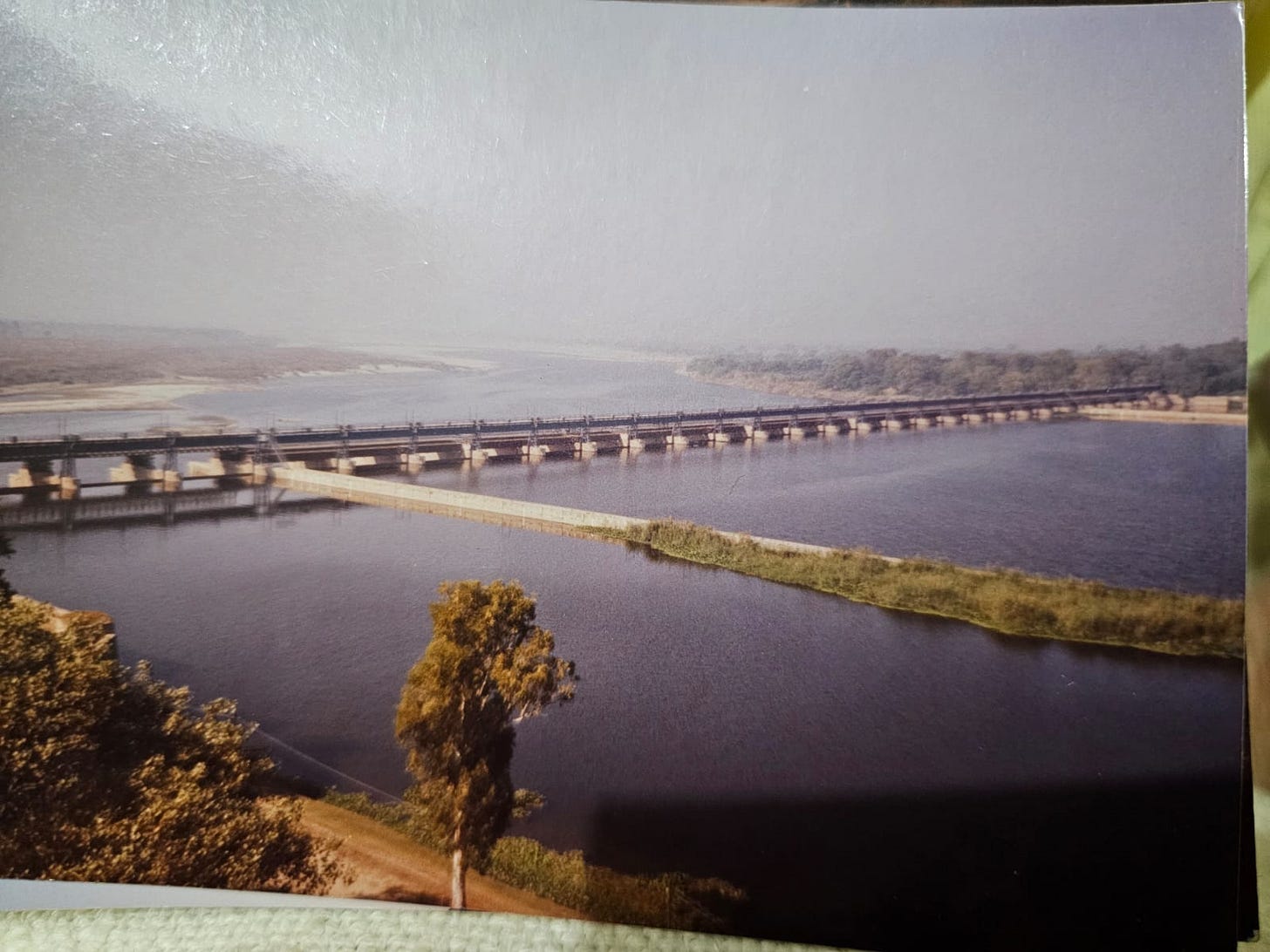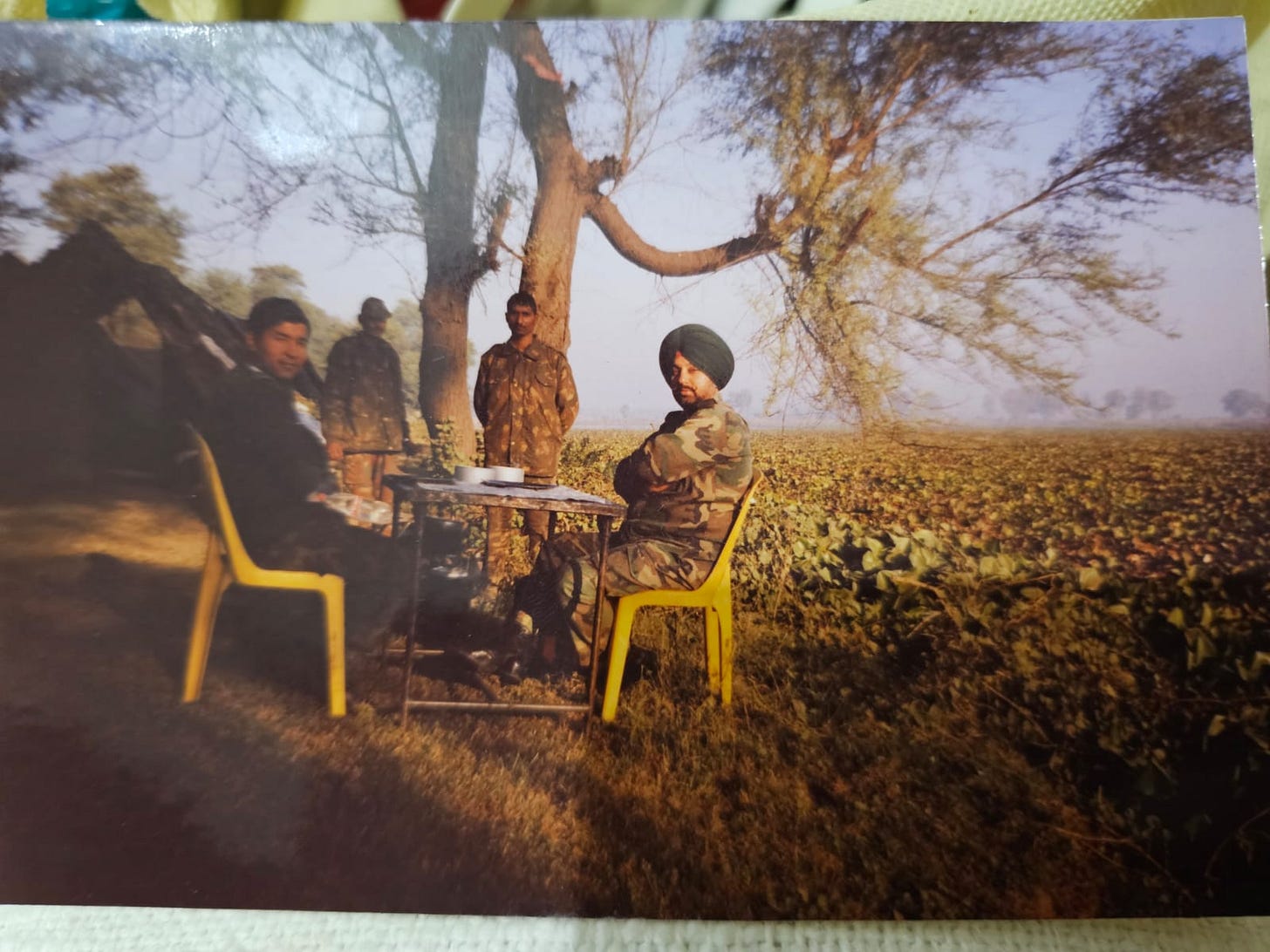Portents of War: Indo-Pak Tensions and the Likely Scenarios Ahead
"The KBS Chronicle" chats with a retired artillery officer, who served in the Hussainiwala Sector (1994–1999) of Ferozepur: Military Preparedness, Artillery Threats, and the Possibility of War.

Portents of War: The Likely Scenarios Ahead
Discussion Note: A conversation with Major Gurjinder Singh Benipal (Retd.), former Artillery Officer and now a senior officer with the Punjab Civil Services.
1. Context and Background of the Discussion
Yesterday, I had an engaging discussion with Maj Gurjinder Singh Benipal a former Artillery Officer who had earlier served as a Short Service Commission officer in the Indian Army, retiring at the rank of Major in 1999. After military service, he joined the Punjab Civil Services in the year 2003 and is now on the verge of superannuation. Much of his military career was spent in the Ferozepur sector, especially crucial years from 1994 t o1999, where he held critical responsibilities as a battery commander overseeing key battery positions, as part of 4FD Regt in the era.
2. On the Possibility of an All-Out War
Major Benipal addressed the pressing question: Will there be an all-out war between India and Pakistan? His perspective was informed, analytical, and deeply rooted in ground-level operational experience.
3. Artillery Advancements and Strategic Vulnerabilities
According to him, artillery technology has advanced significantly on both sides. Standard military practice dictates that artillery guns be positioned at least 10 km away from the International Border (IB) or Line of Control (LoC), to be reasonably away from the enemy fire. Yet, key Indian cities such as Ferozepur, Jammu, and Amritsar fall well within the range of Pakistan’s upgraded artillery systems. Conversely, Indian guns can easily target Pakistani cities like Sialkot, Kasur, and even Lahore. He emphasized that while counter-battery measures are in place, the likely collateral—or deliberate—damage to civilian areas would far surpass what was witnessed during the 1971 war.
4. Historical Patterns and Seasonal Realities of War
Major Benipal observed that none of the past wars between India and Pakistan—including the 1947–48 tribal incursions or the 1965 Battle of Asal Uttar at Khem Karan—were launched during the monsoon. These operations took place in September after the rains, with the 1971 war occurring in December. He believes that if a war were to break out, it would likely be before mid-June, as monsoon season renders large-scale operations logistically and tactically infeasible.
5. Recall of Reserve Forces and Territorial Army Officers
He highlighted the recent move by the government authorizing the Army Chief to recall Territorial Army officers. He speculated if public figures like M.S. Dhoni, an honorary Lieutenant Colonel, would actually report for duty. Further, he mentioned that all retired soldiers, including commissioned and non-commissioned officers, are classified as reservists for five years and can be recalled, especially under manpower strain, such as that potentially exacerbated by the Agniveer scheme.
6. Deployment Strategy and Use of Retired Officers
If called upon, he would suggest that the regular troops currently deployed in the Northeast and Northern Himalayan frontiers be repositioned along the Pakistan Border and LOC, while reserve personnel could be sent to less active zones. Retired officers with firsthand knowledge of the terrain should be redeployed in sensitive areas like Jammu & Kashmir, Punjab, and Rajasthan, of which they had first-hand experience and exposure.
7. Air Power and Strategic Capabilities
He stressed the crucial role the Indian Air Force would play in any future conflict. He referred to advanced systems such as Sudarshan Chakra and Saraksha Kavach as vital components of India’s air defense network. At the same time, he cautioned that surgical strikes would become more frequent in the early stages of conflict.
8. Pakistan’s Financial Constraints and IMF Loan
We discussed the issue of the imminent IMF loan to Pakistan. He remarked that Pakistan is on the brink of financial collapse. I feel that most Gulf nations are unlikely to support it openly, especially after the recent $1 billion IMF loan release—a move India had tried its best to block. This sum, equivalent to approximately INR 8,500 crore, could be diverted toward defense expenditure, and abetting terrorist activities, rather than development, highlighting longstanding concerns over misuse and fiscal indiscipline, especially with easy money from multilateral financial institutions
9. The Nuclear Question and Delivery Mechanisms
Although the discussion did not dwell deeply on nuclear weapons, Major Benipal noted that possessing a nuclear bomb is only part of the equation; the existence of an effective delivery mechanism is equally critical. Drones and missiles currently neutralized by air defense systems dominate early-stage combat scenarios.
10. Deterrence and the Role of a Rogue State
He was confident that the possibility of nuclear war remains negligible, though he cautioned that in geopolitics, nothing is absolute. Pakistan, he described, is effectively hostage to a corrupt military-industrial elite, and thus remains a volatile wildcard in the region.
11. Geopolitical Support and Western Interests
He noted that U.S. President Donald Trump, primarily a businessman, had viewed global conflict zones as potential business opportunities. The IMF’s approval of Pakistan’s loan, we can now confidently assert, came with active American support. However, the U.S. is unlikely to take sides overtly in a South Asian conflict. India, meanwhile, retains strong defense ties with Russia, particularly in air defense, while China may make terse statements in general terms— respecting each others sovereignty— it is unlikely to expose the life and limb of its PLA soldiers at the altar of Pakistan’s war.
12. Concerns Regarding Rafale Performance
He raised a cautionary point from European media, which suggested a Rafale aircraft might have been downed in a recent skirmish with Pakistan. This calls for a critical review of the aircraft’s battlefield performance and India’s broader air defense readiness, since this reportedly the first loss of the state-of-the-art French aircraft in active combat.
13. Media Conduct and Strategic Restraint
Major Benipal was critical of the Indian media's warmongering and sensationalism. He urged strict adherence to Ministry of Defence and Ministry of External Affairs advisories. Real-time reporting, especially during military operations, risks compromising national security and should be avoided unless independently verified.
14. Closing Reflections and Prognosis
The discussion with Major Gurjinder Singh Benipal ended with a hope for peace, though the officer warned that if war does break out, it could mark the effective end of Pakistan as a unified state. A full-scale war could potentially lead to its fragmentation into multiple entities, including an independent Balochistan. Such a scenario, though not fantasy, is an impending reality should a conflict erupt. The costs—human, economic, and infrastructural—would be severe on both sides.
15. Looking Forward
As the Latin maxim goes: “Si vis pacem, para bellum” — “If you want peace, prepare for war.” This conversation underscored the imperative for preparedness, strategic clarity, and cautious diplomacy amid rising Indo-Pak tensions.
By Karan Bir Singh Sidhu, IAS (retd.) (Punjab Cadre, 1984 batch), policy analyst and geo‑strategic expert, retired Special Chief Secretary, Government of Punjab, and former Deputy Commissioner Amritsar (1992–96), Additional Deputy Commissioner Amritsar (1990–92), District Magistrate, Police District Batala (1989) – a frontline administrator who battled Pakistan‑abetted proxy war.






